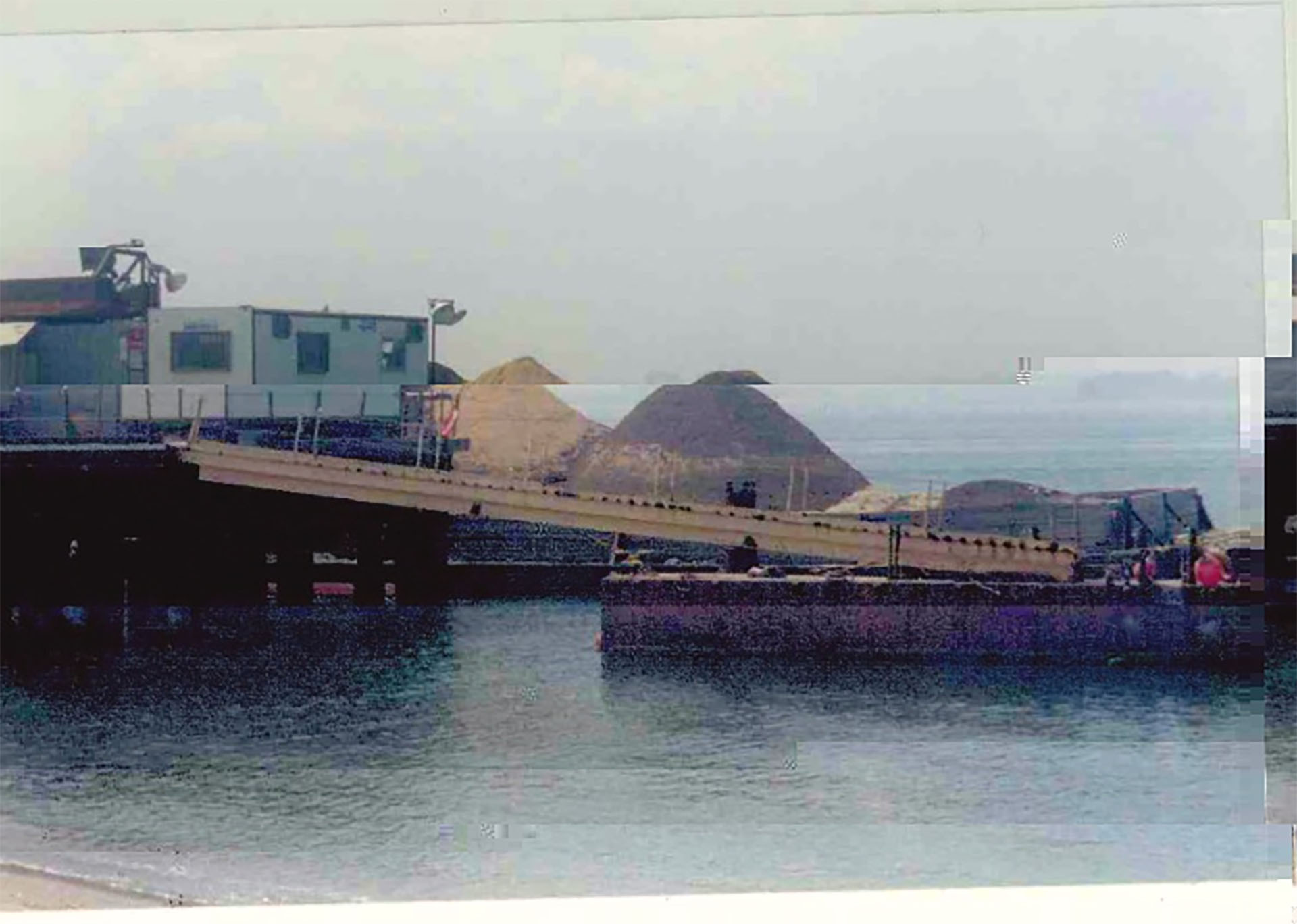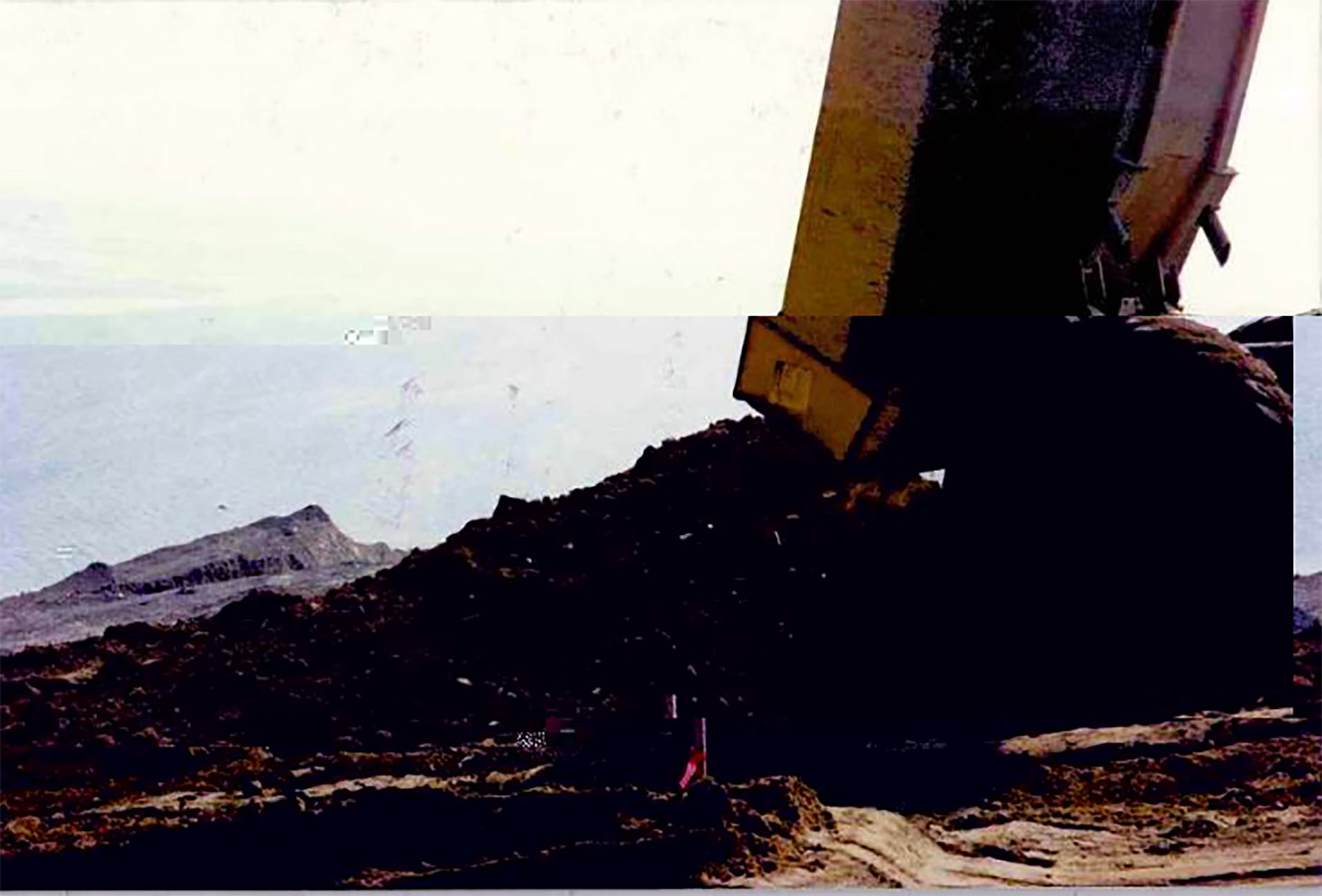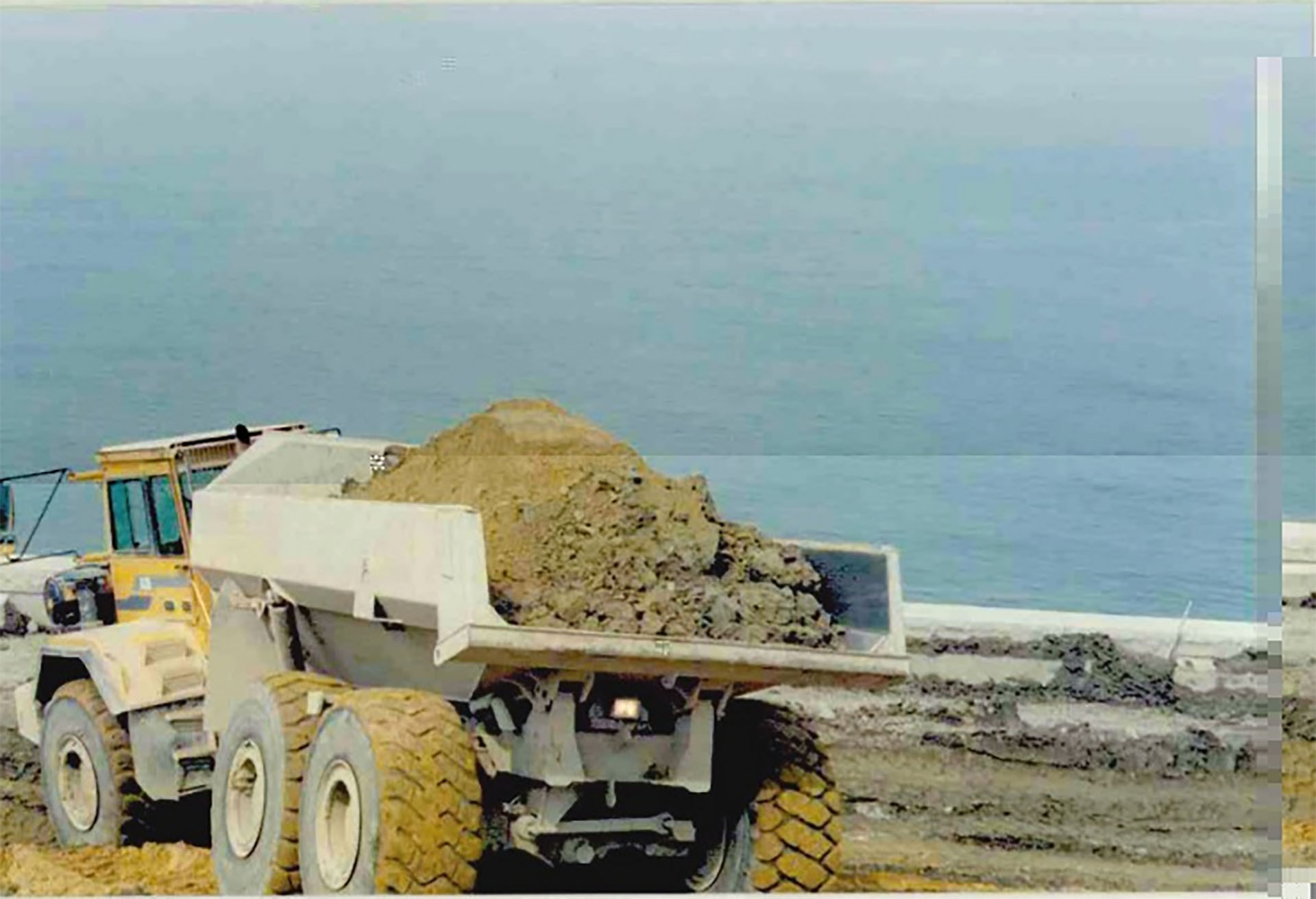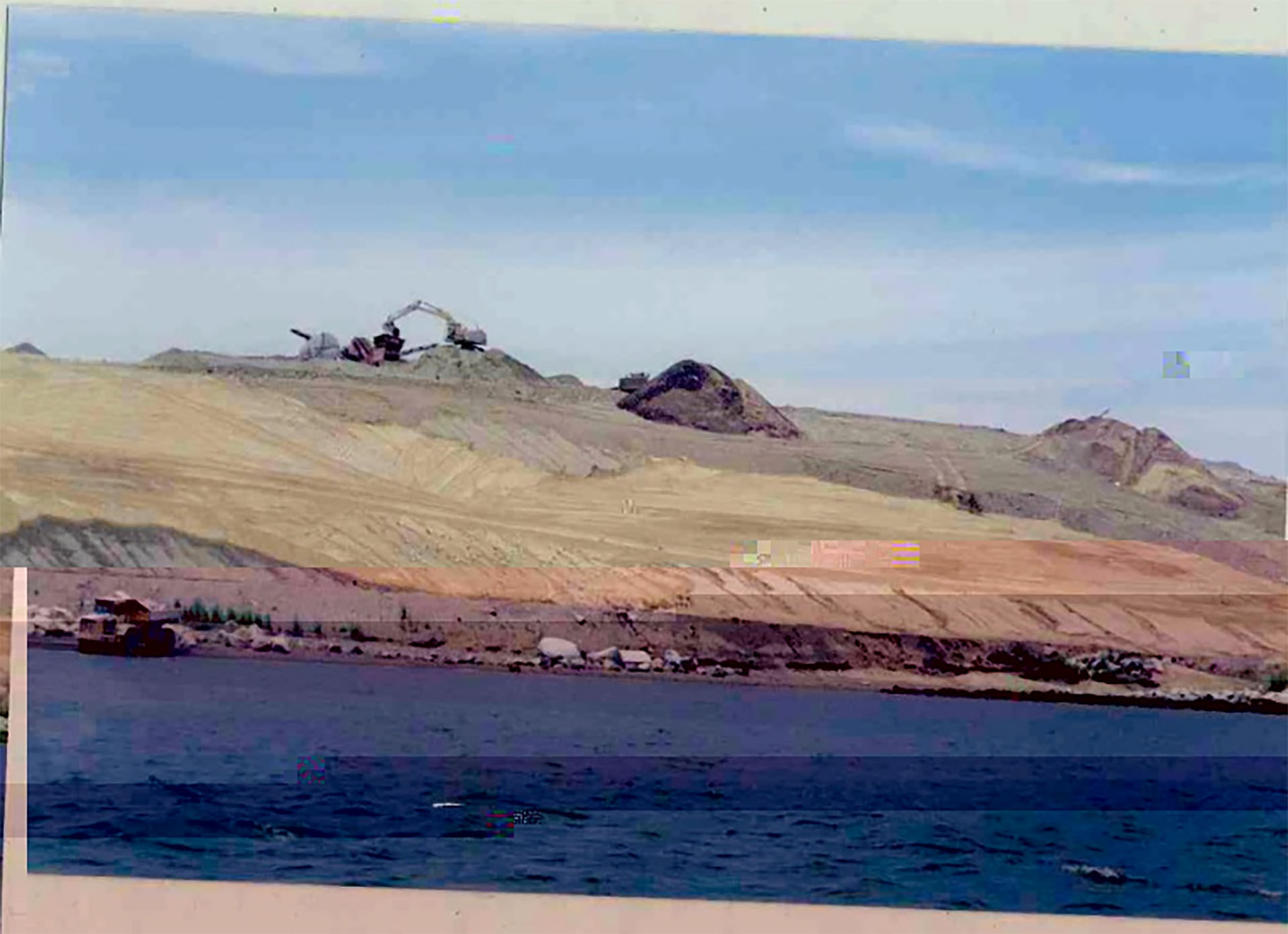The Dirt Issue
Where Does the Dirt Go?
How Spectacle Island Was Transformed From Landfill to Lush
My favorite view of the Boston skyline is on a ferry heading out to Spectacle Island. For those unfamiliar, Boston’s downtown is built on a round nub. From the water, you can see its arc of tall buildings suddenly drop off at the Harbor as you speed away. It’s a good view because of its extremity, and in part, because it feels like leaving city life behind for something more natural.
Spectacle Island is one of the most-visited of Boston’s Harbor Islands. Less than three decades into its reincarnation as a park, it’s already got a small swimming beach, hiking trails, and a visitor center complete with a food stand. In the summer, there are yoga classes, jazz performances, and quintessential New England clam bakes. Away from the sandy shorelines, it’s lush with trees and shrubs and berry bushes. You'd never know that for nearly 100 years, most of Spectacle Island used to be a literal dump, a giant pile of methane-belching trash, horse remains, and leaky excrement—all thanks to millions of cubic tons of dirt that make it the wonderful escape that it is today.
Despite its relative ubiquity across the planet's surface, millions of tons of dirt is not easily acquired. Spectacle Island got lucky: the project to turn this Harbor Island into a park dovetailed with the Big Dig, a massive U.S. highway project that unearthed a ton of dirt.
To this day, the Big Dig is one of the most expensive and extensive highway infrastructure projects in the United States. Officially called the Central Artery/Tunnel Project, it moved a six-lane elevated section of Interstate-93 called The Central Artery that flowed above downtown Boston entirely underground. It also built a third tunnel to Boston's Logan Airport. This massive project started just a few months before I was born, in the fall of 1991.
As such, the project looms large in the memory of any Bostonian old enough to remember. When I moved to the city in 2015, it was one of the first things I learned about the local psyche. People out west might be scared of “the Big One,” a giant, destructive earthquake that the San Andreas fault is long overdue for. But here, Bostonians have already experienced an overturning of the earth. And they’re terrified of another one.
While this often manifests as a frustrating excuse to avoid pursuing new ambitious infrastructure projects that, in my opinion, the city needs, I have an appreciation of the fear. After all, the Big Dig, originally budgeted at $3 billion, will ultimately cost Massachusetts some $22 billion when all the interest is paid off years from now. The state proudly compares it to “some of the great projects of the last century” which seems a bit overstated—placing it among great projects like the Chunnel, and the Panama Canal.
The Big Dig tunnel extends just under 13 kilometers8 miles. But in that relatively short distance, they go as deep as 37 meters120 feet below the city. To get that deep, the Big Dig excavated more than 12 million cubic meters16 million cubic yards. As space was created underground, the earth had to come up. You can still pay a visit to 2.3 million cubic meters3 million cubic yards of it today. All you have to do is hop on the ferry across Boston Harbor to Spectacle Island.

To understand the island’s full metamorphosis, we need to go back in time. The entire cluster of Harbor Islands are classified as drumlin islands, formed around 15,000 years ago when the glaciers retreated and left behind smooth mounds of sand, gravel, and rock. As the ice melted and water rose, the islands became surrounded by what’s now Boston Harbor. It’s the only drumlin ‘swarm’ in the country that intersects a coastline.
Like many of the other Harbor Islands, Spectacle has an illustrious history. The Massachusetts tribe, who the state is named after, spent their summers on Spectacle Island, which they called The Twins. Its natural shape is two side-by-side lumps, formed by the glaciers centuries ago.
When Europeans arrived on the shores of the New England territory, they christened it Spectacle Island since to them, the mounds looked like a pair of glasses. In 1630, the Massachusetts Bay Colony granted the island, along with three others to Boston in a sweet four islands for four shillings a year deal.
In 1717, the island was briefly a quarantine station for Irish immigrants at risk for smallpox and other diseases. After those facilities were relocated to another harbor island, Spectacle Island went back to being farmland until the 1840s, when summer resorts started popping up on its shores. Gambling, which was outlawed in Puritan Boston, was rolling on the island until a big crackdown on resorts in 1857. That paved the way for entrepreneur Nahum Ward to build his horse rendering plant, where countless horses were melted down into a variety of products including tallow, lard, animal feed, protein meal, cosmetics, and mechanical lubricants. Some of the workers in the factory moved their families out to the island, and Boston’s smallest school was run there for a short period of time.
Finally, in the early 1900s, Spectacle Island became the city’s landfill where trash would rise up to 26 meters85 feet high. Although it stopped accepting new trash in 1959, the heaps of vintage refuse remained there for decades. Until very recently, the island had a reputation for smelling bad and sparking spontaneous methane combustions. No one was allowed to step foot on it.
By the time the Big Dig began moving load upon load of dirt above ground in the early ‘90s, its partnership with Spectacle Island became one made in post-industrial symbiotic bliss. For years, the island had been leaching toxins into the Harbor, which was treated more or less as an extension of the City’s sewers. The broader Harbor clean-up was underway, and the Big Dig needed somewhere to put all the dirt piling up downtown. With it, the landfill could be capped so it didn’t continue contaminating the Harbor.
“The remarkable renewal of Spectacle Island from a smoldering dump to a public park is representative of the rebirth of the Boston Harbor Islands as a whole,” writes Christopher Klein in “Discovering the Boston Harbor Islands: A Guide to the City’s Hidden Shores.”
Thus, the dirt was put on barges and shipped out across the Harbor to completely cover the landfill, and then some.

As a result of the massive simultaneous construction project, what was once two drumlin islands connected by a narrow spit grew by 14.5 hectares36 acres. The North drumlin got taller and taller, ultimately rising to 48 meters157 feet high, 21 meters68 feet higher than the nearby Boston Light – so tall, its height had to be registered by the Federal Aviation Administration so that planes taking off and landing at nearby Logan Airport could still have a clear line of sight.
But transplanting the dirt from the Big Dig wasn’t as straightforward as simply barging a mountain of earth onto the island then planting. First, a half-meter2-foot clay liner was laid down in order to cap the landfill. From there, two additional layers of dirt substrate were transplanted, allowing plants to take root and grow.
The woman who guided the dirt-mixing operation that allowed for today's green island was landscape architect Clarissa Rowe. While the engineers and contractors on the project wanted the job done as cheaply as possible, Rowe wanted to do more than dump the dirt and call it a day.
“I had young kids at the time, and one liked to eat dirt,” Rowe told me recently, from her downtown Boston office. “While I was working, I was thinking about providing a safe environment for them.”
The fact that there are once again thriving grasses and trees on Spectacle Island is all thanks to Rowe’s insistence on creating and using two specific manufactured mixes of soil for the top layers: the loam substrate placed above the clay is one part glacial till, which naturally occurs on Spectacle Island, and one part sand, the coarse kind that would allow the soil to be permeable. The sand was brought in from a quarry on Boston's South Shore. Meanwhile, the uppermost layer of Spectacle Island's topsoil is a combination of glacial till, sand, and compost.
At the time, project managers called Rowe “The Potting Soil Women” for how carefully she considered the soil. “They didn’t want someone telling them what soil was,” she said.
One day, Rowe found large pieces of black plastic and large wood products in the soil. She found out later that the contractors had run out of the soil they were supposed to be using and subbed in wastewater compost for the soil.
That was unacceptable, Rowe told her co-workers. She never saw the wood and plastic again.
Other facets of the fill-in didn’t go as planned, either: one winter, an entire side of the island sloughed off. There was, briefly, a crab apple tree orchard, but the plants were eaten by rodents.
But overall, says Rowe, the island has been a massive success.
“I’m proud of the way it looks today,” Rowe told me. “I always said this is an experiment. This is a man-made island. It’s trying to be sustainable in its own way”

Spectacle Island isn’t the only landfill in the Boston area that got a second lease on life as a park thanks to Big Dig dirt, either. Millennium Park in West Roxbury, south of the city, used to be the Gardner Street Landfill. It now includes 9.6 kilometers6 miles of walking trails and a canoe launch point on the Charles River. For all the dirt that went to Spectacle Island (2.3 million cubic meters3 million cubic yards), just as much Big Dig dirt went to cities and towns across the region to cap their landfills that had also reached capacity.
With all of these projects, especially the parks, Bostonian's trust lies in layers of dirt and clay. If you stop and think about it for too long, you become acutely aware of the trash decomposing under your picnic.
However, there is not much to fear if you know your soil science. Capped by a half meter2 feet of clay with layers and layers of soil separating landfill from the surface, Rowe and her team specifically selected shallow-rooted plants for Spectacle Island that wouldn't grow below the upper layers and into the Big Dig dirt below.
The island also has a system for dealing with what the landfill still expels. For those unfamiliar with the logistics of waste, over time, landfills leak a nasty liquid called leachate, which is like garbage coffee: it brews among the trash and seeps out. To prevent this from happening, Spectacle Island has a leachate collection pipe that whisks the brew away. And unlike many other landfills across the country, it’s consistently monitored and fixed when necessary.

When I took a ferry out to Spectacle Island for the first time, I was completely unaware of its history, as can happen when you’re a blissful outsider. I never knew Boston with a Central Artery, and I never knew Boston torn up by Big Dig construction. I never knew Spectacle Island as a dumping ground you could smell from miles away.
I write this because I’m fascinated by the concept of shifting baselines: the idea that although you can read and study about a place all you want, the change that you really feel is the change that you personally experience. I’ve only known Spectacle Island as a park that you can take a ferry to from downtown Boston. Now, I know it as a place of fascinating history and geography, but no matter how many times I watch this video of the Harbor Islands in 1969, it still is a past iteration of the island that’s on the other side of my baseline.
The last time I visited, it was late in the season, a September weekend shortly before the ferries stop running for winter. We hiked up to the top of the North Drumlin, where a large family was celebrating someone’s birthday in one of the gazebos. From the top, we could see the Boston skyline clearly under the bright blue sky. We looked out across an island covered in grasses, trees, and humming insects.
There are five different kinds of grasses planted on Spectacle Island, a deliberate attempt to replace grassland, an endangered habitat in the city of Boston. These beautiful grasses, along with the other plant life, attract birds that nest on Spectacle that don’t nest anywhere else. It’s impossible to visit the island and not hear birds. Not just screaming gulls but red-winged blackbirds and red-tailed hawks.
That’s my baseline—one built on layers of natural sediment, human impact, and a human drive to create an unlikely home for nature once again.
Spectacle Island (Boston Harbor Islands National & State Park)
Wild Ones Live (99% Invisible)
The Evolution of Spectacle Island (Boston Globe)
Ashira Morris is a writer interested in local environments and our changing climate. She works in environmental advocacy and lives in Cambridge, MA.
Photographs courtesy of the author. Unfortunately, some data loss occurred during the image transfer.
Historical map via NOAA, Historical Map & Chart Collection.